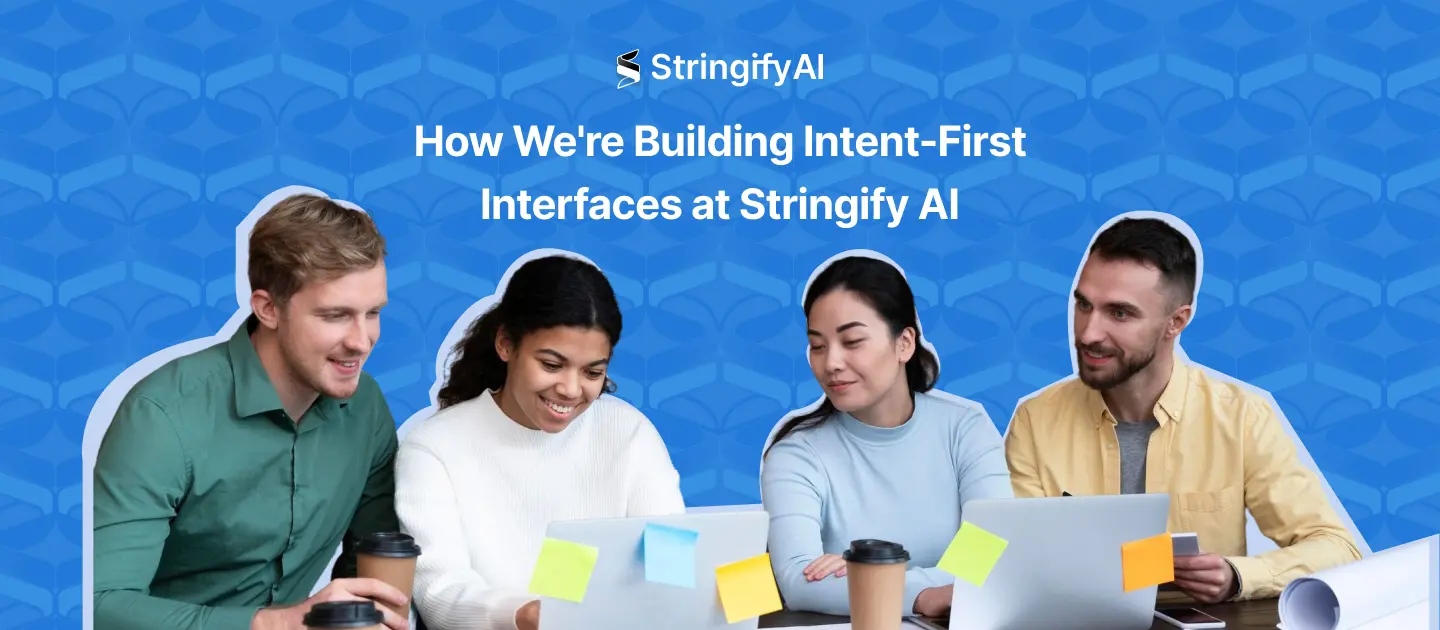How We're Building Intent-First Interfaces at Stringify AI

From Concept to Craft
In our recent article, we explored a foundational shift: that LLMs (large language models) are reshaping how we interact with software, not just who interacts with it. Instead of traditional click-based workflows, we're entering the age of intent-first design.
At Stringify AI, we're not just observing this shift—we're building for it. This blog walks you through what that actually looks like.
What Is Intent-First Design?
Most software still assumes users know the path to their goal. Open tab. Select dropdown. Apply filter. Export file. It’s structured and deterministic.
Intent-first design flips this.
The user begins with a goal, expressed in natural language: "Compare this month’s revenue to last quarter's, and highlight the dips."
And the system? It responds like a capable assistant: it pulls the right data, frames it appropriately, and even offers a few follow-up questions to clarify.
The interface becomes a facilitator, not a guide.
Why We're Betting on This Approach
Intent-first interfaces:
- Reduce friction: No more multi-click flows
- Feel human: Conversations replace configs
- Handle complexity: Systems adapt to user context
Just as smartphones replaced physical maps with GPS-guided flexibility, LLMs replace fixed UI paths with intelligent, situational flexibility.
Our Core Design Principles
Here's how we approach LLM-native design at Stringify:
1. Start with goals, not screens
We map what outcomes users want, not what features they should use.
2. Design for promotability
We ensure that the backend knows how to act on loosely phrased user input.
3. Build invisible affordances
Rather than toolbars, we embed micro-hints: suggestions, ghost prompts, past usage patterns.
4. Clarify without clutter
The model offers clarifying questions only when needed—not upfront decision trees.
5. Trust > Control
We prioritize user confidence over user micromanagement. The system explains itself.
Sample Workflow: Report Generation
Old Way:
- 1. Navigate to reports tab
- 2. Select date range
- 3. Choose report type
- 4. Apply filters
- 5. Click generate
- 6. Download and interpret
Our Way: User: _"Give me a sales summary for Q1 vs Q4, focused on churn segments" System:
- Auto-selects Q1/Q4 from historical sales data
- Highlights churn-related insights
- Offers to visualize or compare deeper factors
What We’re Still Solving
This isn’t magic. We’re actively addressing:
- Handling ambiguity: Teaching the system when to ask, not guess
- Context carry-over: Keeping user intent consistent across multi-step flows
- Model transparency: Letting users peek into how results were formed
Final Thoughts
Intent-first design is not just a UX evolution—it’s a mindset shift. It requires us to design for trust, clarity, and flexibility. At Stringify AI, we're learning every day, and we're excited to keep pushing the edges of what interfaces can be.
In our next post, we’ll explore the user side: Prompt Literacy and why it’s the key to unlocking the value of LLM-native tools.